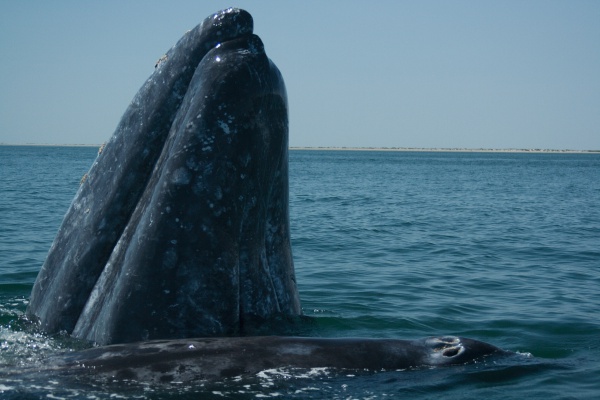Facts About Gray whale
The gray whale, also referred to as the grey whale, gray back whale, Pacific gray whale, or California gray whale, is a captivating baleen whale renowned for its remarkable migratory journeys. These gentle giants embark on annual migrations between their feeding and breeding grounds, demonstrating extraordinary resilience and adaptability.
Gray whales are easily recognizable by their dark skin mottled with gray patches and white spots. These marine mammals can reach lengths of up to 14.9 meters, weigh as much as 45 tons, and live for 55 to 70 years, with some individuals surviving even longer. They are the sole remaining members of the genus Eschrichtius, with a lineage dating back over 30 million years.
There are two primary populations of gray whales. The larger population resides in the eastern North Pacific, while the smaller, endangered group is found in the western North Pacific. Unfortunately, the North Atlantic populations were likely driven to extinction due to extensive whaling. However, recent sightings in the Mediterranean Sea and off the coast of Namibia hint at a possible return to their historical breeding grounds. Notably, one gray whale set a record for the longest mammal migration, covering over 22,000 kilometers.
Unlike many other whale species, gray whales lack a dorsal fin. Instead, they possess short baleen plates used for filter feeding, primarily consuming benthic crustaceans. Their unique feeding behaviors are a marvel to witness. When it comes to breeding, gray whales prefer warmer waters. Females give birth to calves that are around 14-16 feet in length after a gestation period of approximately 13.5 months, typically producing offspring every one to three years.
Historically, gray whales were heavily hunted, leading to severe population declines. Fortunately, conservation efforts have allowed their numbers to rebound, and they are currently listed as "Least Concern" by the IUCN, with the exception of the critically endangered western Pacific subpopulation. Nonetheless, they continue to face threats from human activities, climate change, entanglement in fishing gear, ship strikes, and offshore oil and gas development.
Due to their size and migratory nature, gray whales are rarely kept in captivity. Past attempts have been short-lived, with the last captive gray whale being released after it outgrew the facilities.
In recent years, there has been a troubling increase in gray whale strandings. Scientists believe this may be due to changes in prey availability and quality, potentially linked to climate change. Gray whale calves also face significant predation threats from killer whales, with predation rates estimated at around 33%. Interestingly, there has even been a proposal to airlift gray whales from the Pacific to the Atlantic in a rewilding effort, although this ambitious plan has yet to be realized.
The story of the gray whale is one of survival and adaptation, underscoring the importance of conservation and the incredible journeys these majestic creatures undertake.

 Guatemala
Guatemala